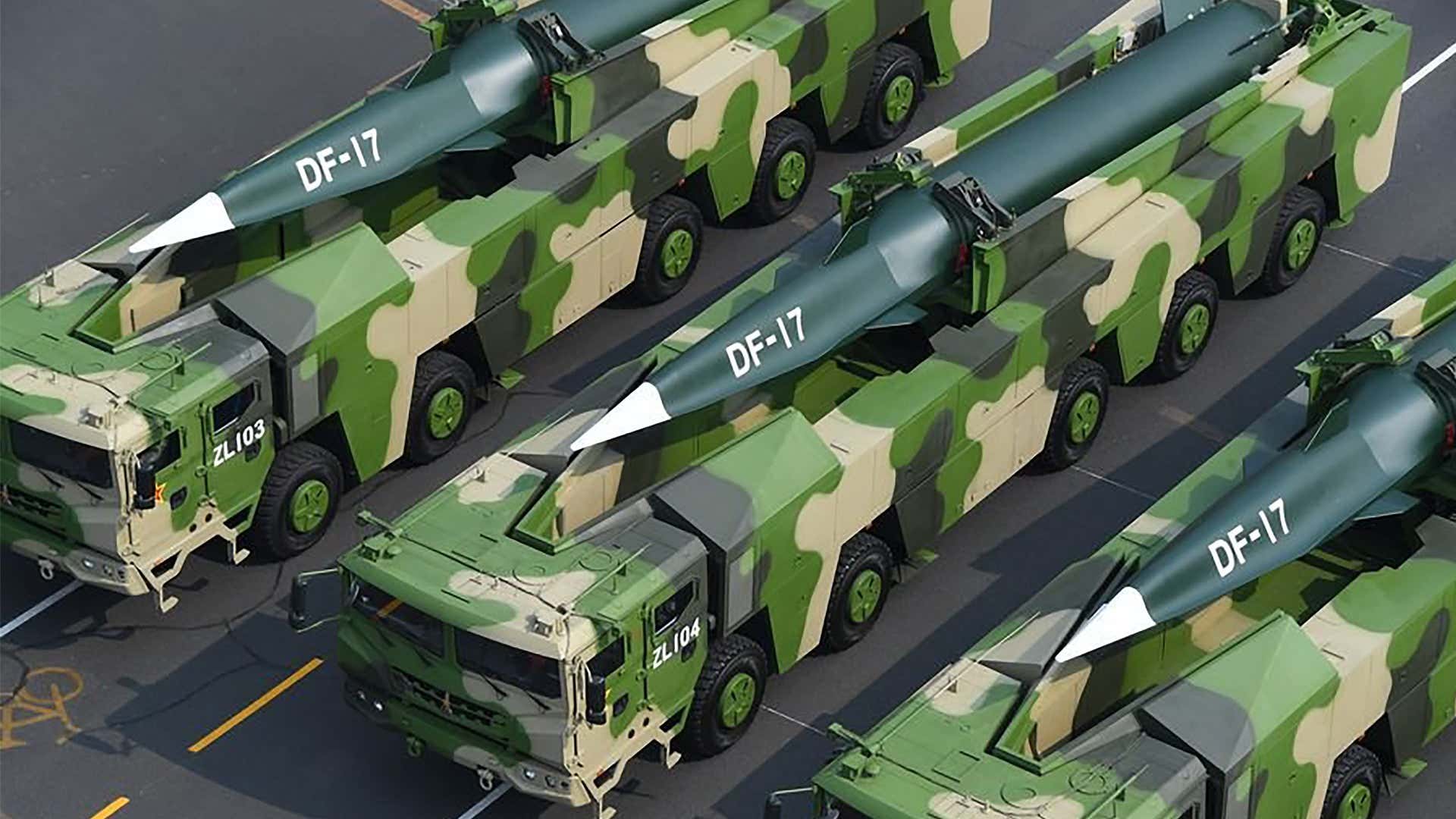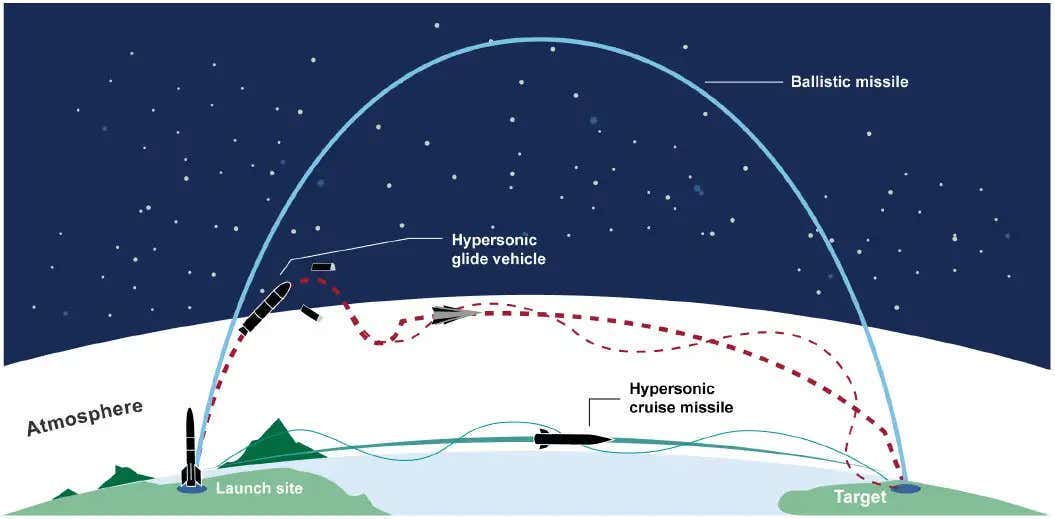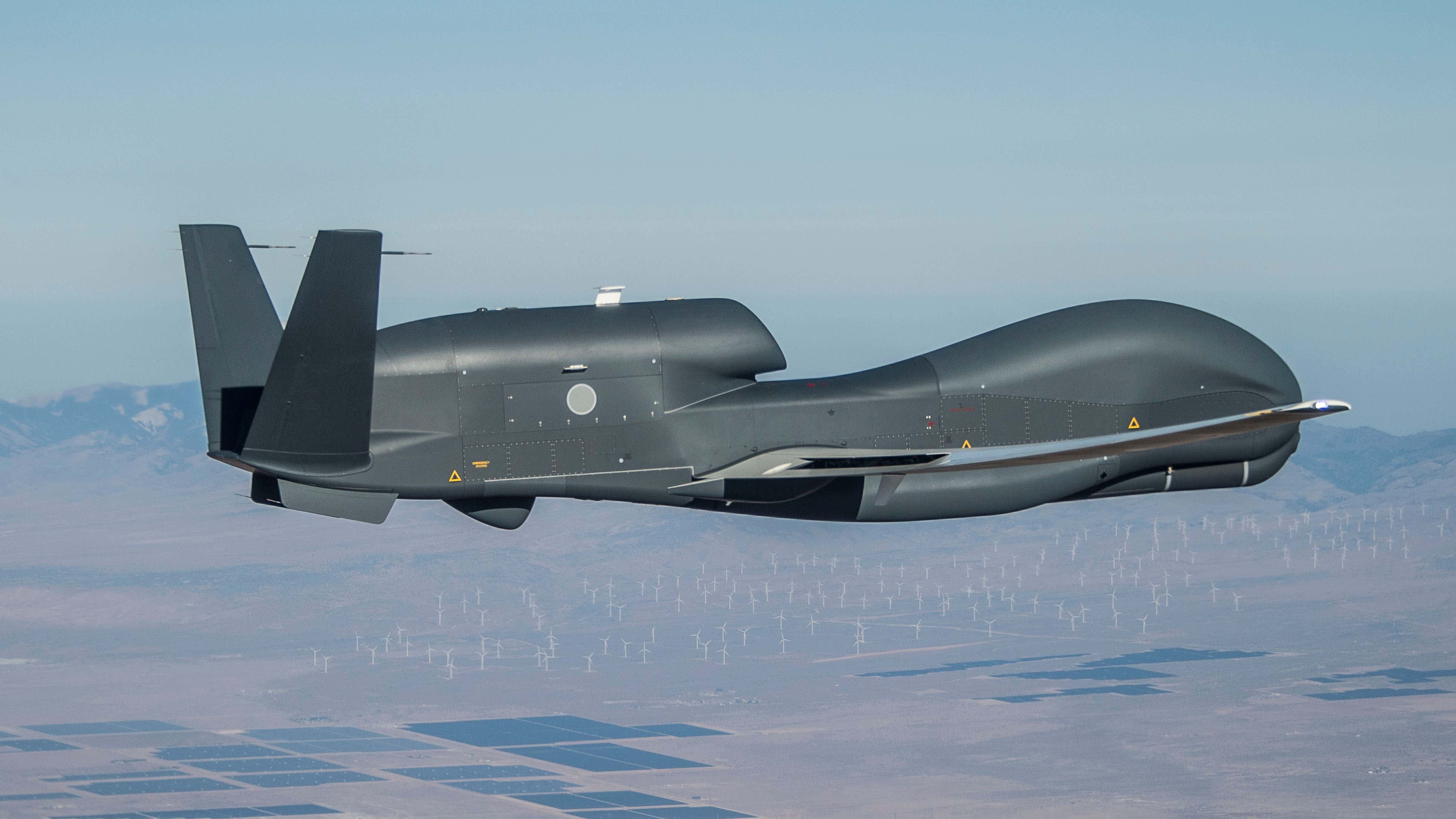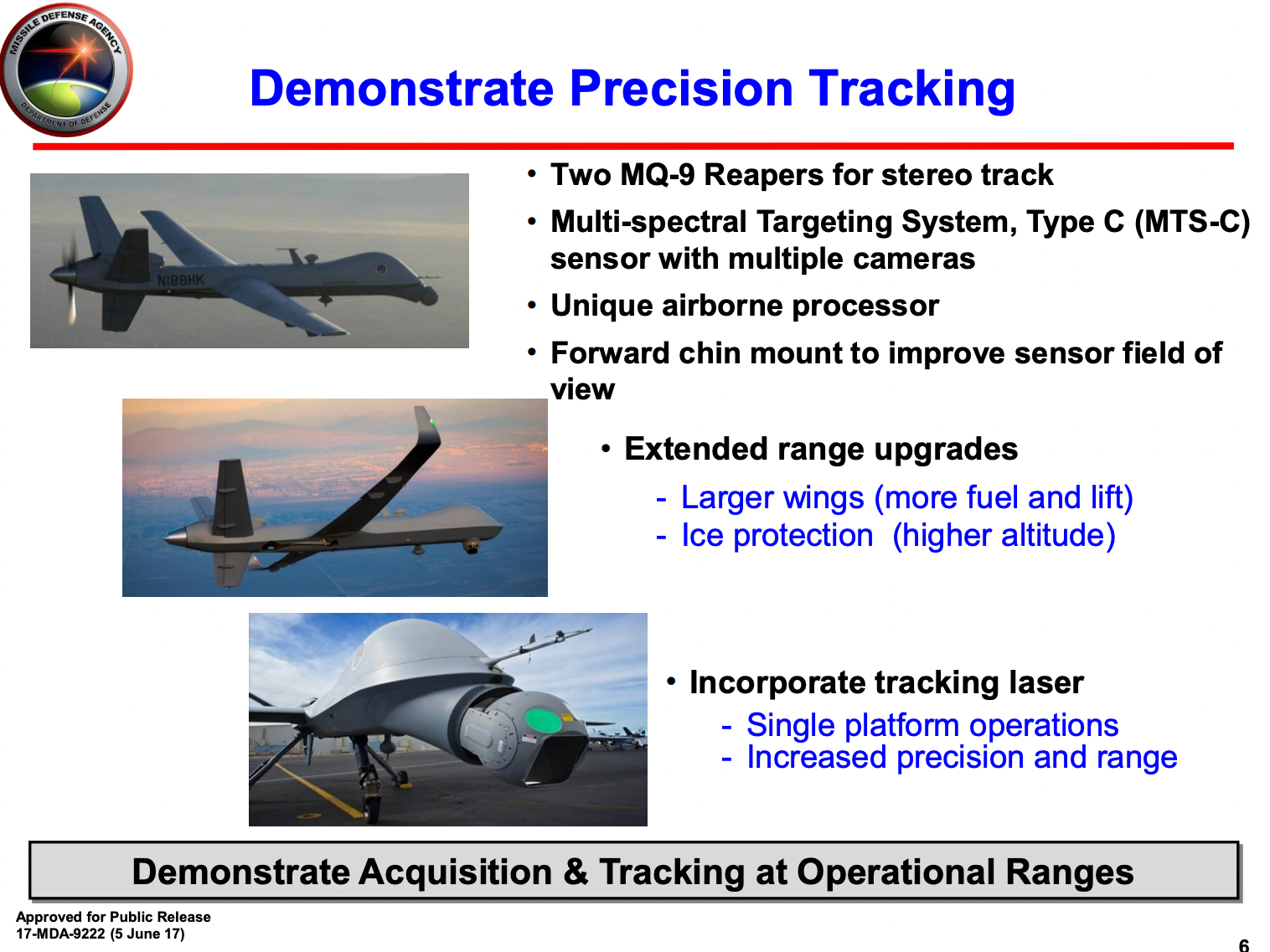Japan Wants To Detect Incoming Hypersonic Missiles With Unmanned Aircraft
With high-speed missile threats from China and Russia to contend with, Japan may call upon drones to provide early warning.
BY
THOMAS NEWDICK AUGUST 9, 2021
The Japanese Ministry of Defense is considering using unmanned aerial vehicles equipped with
infrared sensors to provide early warning of potential attacks on the country by
hypersonic missiles. Recent reports from the country indicate that the drone-based detection system has been proposed as one response to high-speed weapons developments in China and Russia and specifically to counter a new class of ballistic missiles carrying
hypersonic glide vehicles.
According to a story
on the website of the
Sankei Shinbun daily, the Japanese Ministry of Defense announced the plan on August 7 as part of what the newspaper described as Tokyo’s “rush to develop capabilities to counter the development of hypersonic weapons.”
The Chinese Dongfeng-17 (DF-17) hypersonic weapon was displayed to the public for the first time in October 2019 during the National Day Parade in Beijing.
The same report notes that the unmanned aerial vehicles would be equipped with an undisclosed but existing infrared detection system originally designed to
identify ballistic missile attacks, “technology verification” of which was apparently completed in 2019. The “small infrared sensor” would be carried aloft by a drone that would “operate in an airspace closer to the enemy” and which would be able to remain aloft for long periods.
The problem of detecting a hypersonic missile attack early enough to respond with any chance of success is one of increasing urgency, as
more countries embark on the development of this class of weapon.
Traveling at speeds of Mach 5 or above, hypersonic weapons fly at velocities broadly similar to ballistic missiles, but unlike them, they do not follow a predictable ballistic trajectory and are able to maneuver as they head toward their target, making them harder both to detect and to defeat by kinetic means.
“The maneuverability and low flight altitude of hypersonic weapons could challenge existing detection and defense systems,” a Congressional Research Service report on hypersonic missile defense
stated in June this year. “For example, most terrestrial-based radars cannot detect hypersonic weapons until late in the weapon’s flight due to line-of-sight limitations of radar detection. This leaves minimal time for a defender to launch interceptors that could neutralize an inbound weapon.”
GAO
A schematic diagram showing a notional hypersonic glide vehicle flight profile compared to that of a traditional ballistic missile. Also shown is the flight path of a low-flying air-breathing hypersonic cruise missile.
The Japanese drone-based detection system would involve “multiple” UAVs continuously monitoring the airspace and transmitting their collected data to ground stations.
The type of drone, or drones, envisaged for this surveillance mission are not specified, but unmanned aircraft is an area that the Japanese military is increasingly investing in, after an
admittedly slow start.
The Japan Air Self-Defense Force, for example, has ordered three
RQ-4B Global Hawk Block 30 high-altitude surveillance drones, the first of which took to the air in Palmdale, California,
in April this year. Able to fly at an altitude of up to 60,000ft and conduct sorties lasting more than 32 hours, the RQ-4 would be a suitable candidate for hypersonic missile detection, but a fleet of three vehicles would likely struggle to provide the degree of coverage required.
NORTHROP GRUMMAN
Japan’s second RQ-4B Global Hawk, which made its first flight on June 24, 2021.
Meanwhile, in the United States, the Missile Defense Agency (MDA) has been working on UAVs intended to detect hostile ballistic missiles, which could include those carrying boost-glide vehicles. The agency has conducted airborne sensor tests using specially configured MQ-9 drones, equipped with infrared tracking sensors and lasers, and precision tracking and discrimination algorithms. In one MDA trial, which took place
off Hawaii in 2016, a pair of MQ-9s detected and tracked a ballistic missile target during a test in the Pacific.
MDA
A pair of experimental MQ-9s adapted with additional sensors for the missile detection mission.
In all likelihood, this kind of ability to detect and track high-speed threats and triangulate them is a similar model to what Japan is now envisaging. However, using two drones, at least, is a prerequisite of this type of scenario, in order to combine data from their sensors to create a stereo track and geolocate the threat. At the same time, two aircraft or more geographically separated drones would have to be airborne at all times to ensure coverage. Nevertheless, there is clearly potential for Japan to leverage at least some of this research and capability with the help of the United States, to help meet its own emerging requirements.
MDA
While there are also air-breathing hypersonic weapons at least under development, the primary concern for Japan appears to be boost-glide vehicles.
The
Sankei Shinbun daily specifically outlines the
Chinese DF-17 and the
Russian Avangard as threats that require new detection techniques. The DF-17 uses a ballistic missile to boost an unpowered DF-ZF hypersonic boost-glide vehicle to well over Mach 5 before the vehicle continues on a maneuvering path through the atmosphere to its target. This is a weapon that
The War Zone has discussed in depth
in the past.
The Avangard similarly uses a ballistic missile to propel a hypersonic boost-glide vehicle to the appropriate altitude and speed, before it embarks on its terminal phase of flight, but, so far, at least, it’s limited to silo-launch, while the DF-17 employs a road-mobile wheeled launcher. The Avangard is known to carry a nuclear warhead, and the same option is thought to be available to the DF-17, alongside a conventional option. Both these weapons could
reach targets in Japan.
RUSSIAN MINISTRY OF DEFENSE
Launch of an Avangard missile.
However drones might be employed within this scenario, it seems likely that advance warning of a potential hypersonic missile attack against Japan won’t rely solely upon UAVs. After all, infrared sensors have certain limitations, including being affected by atmospheric conditions. Indeed, the
Sankei Shinbun report suggests that these high-flying infrared sensors would just be one part of a multi-faceted approach that would also include new radar technology
fielded aboard warships.
The report also says the Japanese government is aiming to build a satellite constellation that will consist of a “large number” of small satellites in low-earth orbit as part of this larger surveillance network. Here there could be parallels with the American efforts to establish a multi-layered
space-sensing network, or Hypersonic and Ballistic Tracking Space Sensor (HBTSS), with a possibility that Japan could receive some of that data, too.
What is conspicuous by its absence from this report is a means to actually
defeat the incoming hypersonic weapons once they are detected and can be tracked. Such defensive measures could include interceptor missiles, hypervelocity projectiles, laser weapons, electronic attack systems, or a combination of any of these. In the United States, for example, the MDA is working toward integrating the
Glide Phase Interceptor (GPI) with the Aegis Weapon System, to provide a hypersonic missile defense capability by the end of this decade. Japan, too,
is an operator of the Aegis system and could potentially seek to acquire the GPI, as well.
Whatever path Japan chooses to take as it sets about bolstering its defenses against the emerging threat of hypersonic weapons, it seems that for now at least, potential aggressors with these kinds of weapons already in their arsenal hold an advantage.
While the basic concept of hypersonic weapons is not new, technological advances mean that boost-glide vehicles capable of flying at Mach 5 or more are now real threats, even if their deployment is, so far, fairly limited. Air-breathing hypersonic missiles are potentially even more challenging to defeat, since their initial launch is even harder to detect, with no telltale large ballistic missile launch plume that could potentially be spotted by space-based surveillance assets.
At the same time, Japan is working on its own secretive hypersonic weapons development programs, again with a focus on boost-glide vehicles. With a view toward deterring China, in particular, in the
East China Sea, Tokyo has been working on a two-pronged approach to fielding such weapons, with reports in the past that an initial system could be ready for service by 2026.
However, while fielding practical hypersonic weapons for offensive use is clearly feasible, the ability to develop effective counters to them is less certain. Not surprisingly, the sheer speed of these types of weapons has led some analysts to argue that an entirely new command and control architecture is required to defeat them. With that in mind, Japan may well require not only a diverse array of detection systems, and means of defeating the incoming weapons, but also an overarching C2 network in which these assets can be brought together and the entire engagement managed in a rapid, seamless manner.
Ultimately, the cost to Japan of fielding such a comprehensive, multi-layered system to detect and then track hypersonic threats, and then defeat them in some way, is likely to run into tens of billions of dollars. That alone could be a serious hurdle to be overcome, but it seems that Tokyo is at least taking the threat seriously.
With high-speed missile threats from China and Russia to contend with, Japan may call upon drones to provide early warning.

www.thedrive.com

 www.thedefensepost.com
www.thedefensepost.com










